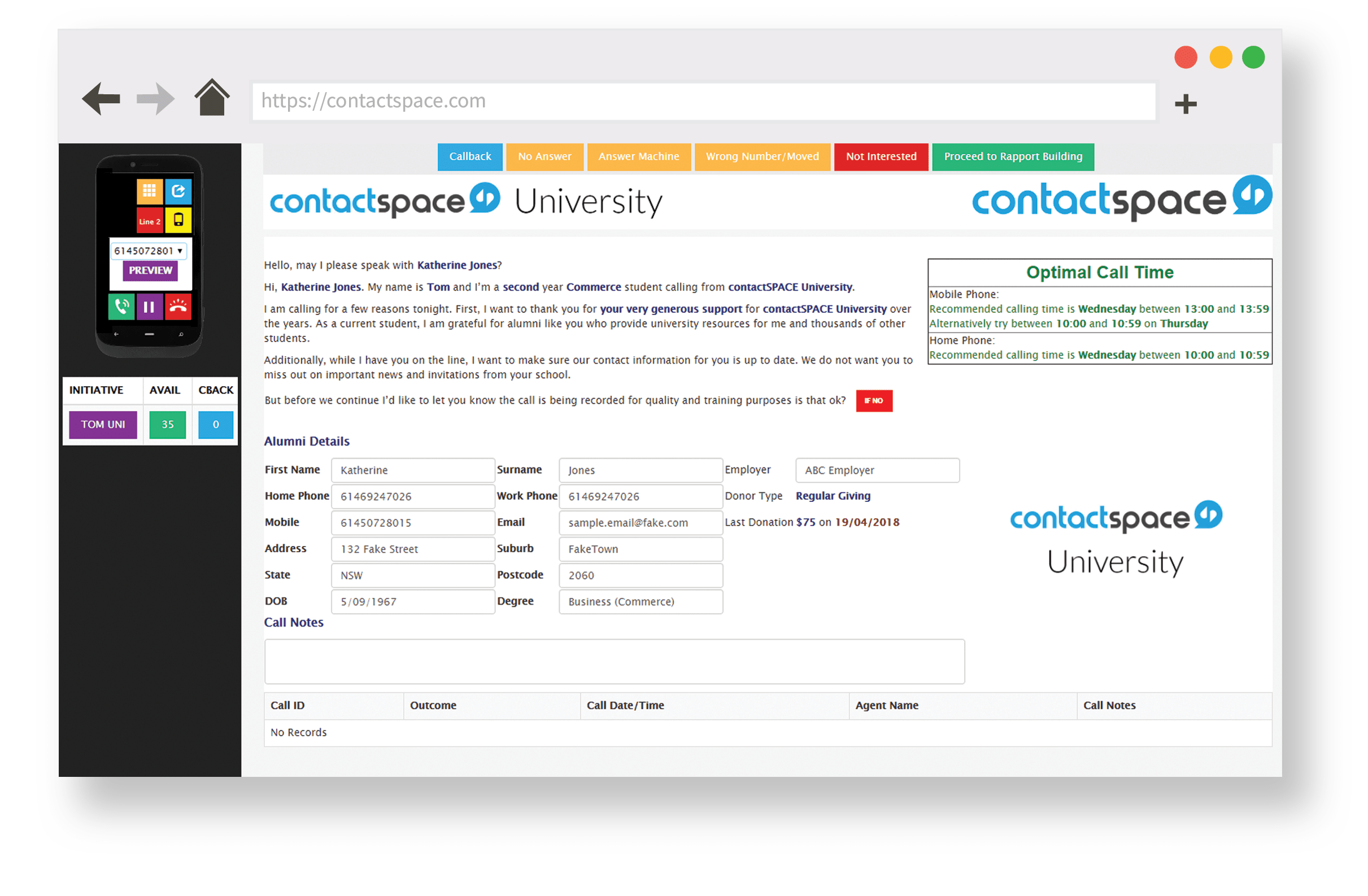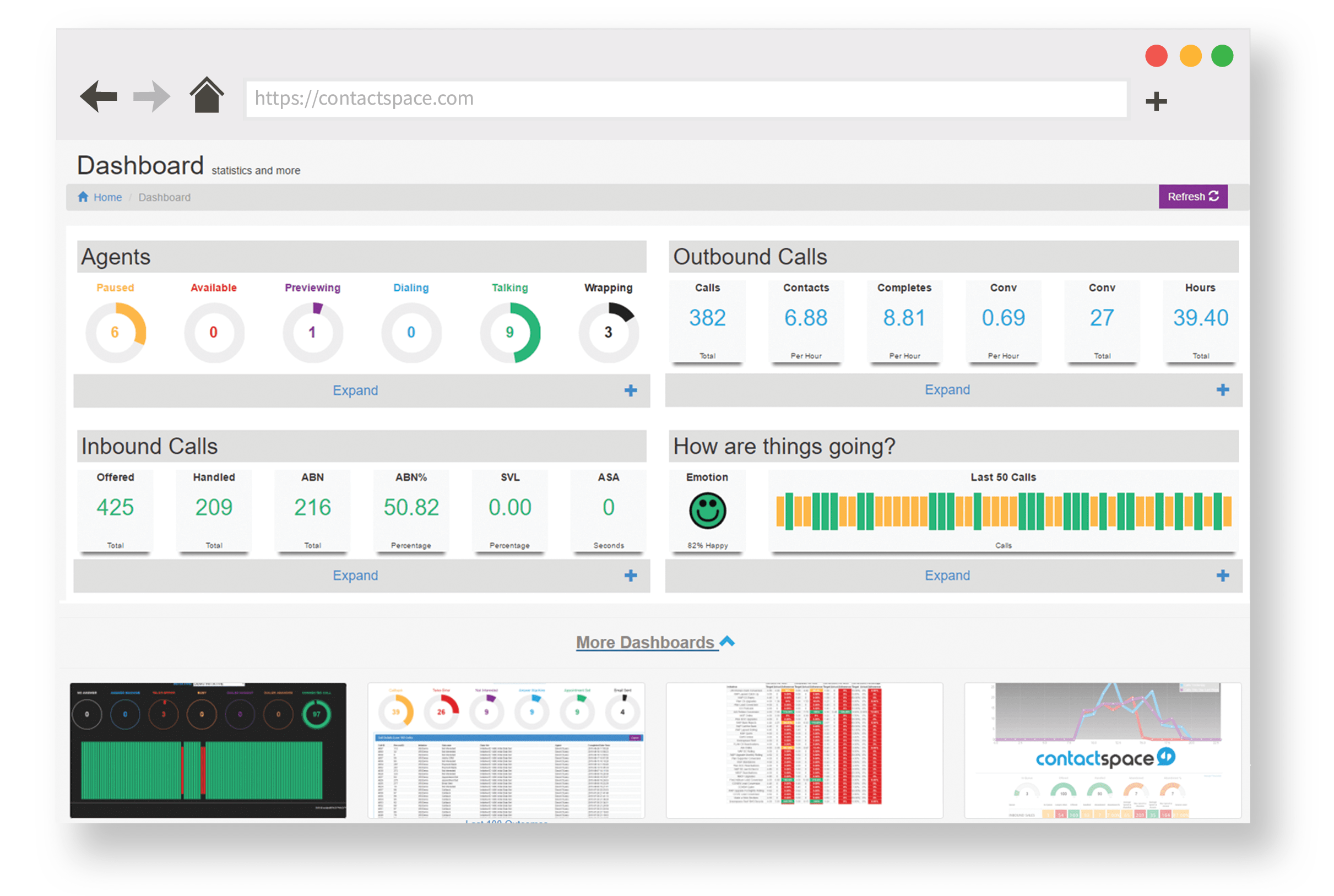The truth is, despite the rising popularity of social media support and online ticketing platforms, customers still like to pick up the phone to reach your customer service team.
This is why for many organisations, your contact centre plays a key role in defining the quality of your customer experience.
Contact centre operational challenges come in a variety of different forms. As a contact centre manager, you know that no two days are ever the same.
Fortunately, software solutions such as contactSPACE help to eliminate much of the complexity of managing an inbound contact centre.
For example, many contactSPACE customers now find it easier to define skills-based routing logic for inbound enquires, and can now create smarter reports to get a better understanding of how agents spend their day.
However, contact centre management is far from easy. You still have to manage issues such as training your team, ensuring you’re delivering effective service, and limiting employee attrition.
Here are 5 common problems that inbound call centres face, and how to overcome them.
1. Ineffective or inconsistent messaging

Keeping agents on-message is one of the most important parts of your job as a call centre manager. However, it’s also one of the most difficult.
If agents are new to your team, there may be a lot of product knowledge to absorb in a short space of time. And even for experienced agents, it can be difficult to deliver effective conversations without word-for-word scripts.
The solution
In a perfect world, you want agents to be able to come onboard and deliver effective messaging immediately. And here at contactSPACE, we have something called a CallGuide to help do just that.

Essentially, a CallGuide is an all-in-one workflow and scripting solution. It allows you to ensure effective messaging from the moment an agent joins you team, without having to rely on word-for-word scripts.
Different customer or product data can be displayed at each stage of the call, with guidance on the right message for that step, allowing agents to maximise the effectiveness of their delivery.
No matter the software solution your team uses, ditching verbatim scripts is generally a good idea. In most cases, word-for-word scripts or strict step-by-step procedures don’t allow agents to genuinely engage with the person on the other end of the line.
To ensure effective messaging, you need to ensure that the agent has the right information in front of them to help guide the conversation.
2. Lack of visibility

For many organisations, your contact centre is the beating heart of the business. It therefore pays to be able to keep your fingers on the pulse.
You need to be able to understand exactly how your team is performing at any given moment, in order to effectively identify and diagnose issues as they occur.
For example, to ensure effective conversation delivery as we just discussed, you need to have a good understanding of what agents are saying, and the outcomes their messaging is achieving. Otherwise, you won’t know whether or not your messaging has room for improvement.
The solution
Your first port of call to understand what your team are doing is your contact centre software. Here at contactSPACE, we help call centres improve visibility in a few different ways:
- Dashboards – designed to help monitor performance on a day-to-day basis, dashboards show you how your key performance indicators are tracking compared to the previous day, or previous week. This is how you keep your fingers on the pulse. If any issues arise, your dashboard will alert you immediately.
- Reports – real-time reporting allows you to develop deeper insights based on what your dashboards are telling you. The difference is, reports allow for more advanced “slicing” of your different dimensions, allowing you to establish relationships between different data points. For example, you might like to look at average talk times by time of day, to see if it’s easier for your team to resolve issues in the morning or afternoon.
- Quality assurance (QA) – QA helps you ensure that agents are staying on-message, and saying the right things on each and every call. QA allows for super-efficient reviewing and scoring of previous call recordings, enabling you to spot things that you might like to reinforce to your team (for example, the importance of the agent properly introducing themselves at the beginning of the call).
- Voice analytics – this is a tool that allows you to automatically review call recordings, rather than having agents manually score them. Speech analytics enables you to analyse the language used by both the agent and customer across the different conversations you’re having. It also allows you to look at the types of issues your customers are raising, helping you better-prepare agents for the exact nature of the calls your team receives.
It’s also ideal if your call centre software integrates with your other essential platforms, to provide a more holistic sense of how your team is performing. For example, with contactSPACE, we provide CRM integrations that allow you to collate data pertaining to your sales, marketing, and customer support activities, providing a better view of overall performance.
3. Ineffective training

Delivering effective training is one of the most difficult parts of being a contact centre manager. Different agents have different needs in terms of support, but you have limited time to deliver training to your team.
You also have to think about how you train new team members. How can you help them hit the ground running?
The big problem with poor-quality training isn’t how it affects your customer engagement. If an agent doesn’t do well on a particular call, this isn’t necessarily a bad thing – in fact, it can be a good learning experience.
The problem with ineffective training is agents can get “stuck in the mud” – they’ll know that they have room to improve, but will be unable to do so.
If agents don’t understand what they can do to improve performance, this can become very frustrating. The end result – a loss of agent motivation and an increase in attrition.
The solution
The best call centre agents are those that undergo continuous growth and development. Whether it be through on-the-job experience or structured training, the learning process should never stop.
To avoid burn out during seminars and training, it’s crucial to make them short, sharp, and as engaging as possible. You might use roleplaying and real-life examples (using call recordings) to give agents a better understanding of how customers might feel on different types of calls.
You can also use gamification to provide more of a structure around the outcomes you want your agents to achieve, or peer mentoring to enable knowledge sharing and help agents that need extra support.
In a perfect world, you would have a process that refreshes agents’ knowledge and skills throughout the workday – in effect, like a constant, automated training process.
contactSPACE CallGuides are able to incorporate knowledge refreshers within the agent’s normal working activity, ensuring your team doesn’t have to memorise every little product detail or procedure in order to be successful.
4. Above-average staff attrition

Attrition is another common issue you’ll face as a call centre manager. Contact centres are known for their turnover – annual attrition rates of 40-50% are not uncommon.
If attrition gets out of hand, this will skyrocket your costs, because searching for, hiring, and training new employees can get very expensive, very quickly – even without accounting for the loss of productivity you’ll face.
The solution
One of the ways you can reduce employee attrition is by acknowledging the work of your best team members in order to improve motivation. We’re not just talking about raises – other forms of incentives such as days off can be useful too.
However, always ensure that every team member has the chance to show their worth – otherwise, you may be perceived as playing favourites. You need to provide support to agents that need it.
As a manager, it can be a good idea to plan the entire agent journey right from recruitment to ensure that new hires stay with your team. This could involve planning onboarding, ongoing training, and how you’ll provide effective feedback about agent performance.
You might also like to think about how your business systems will help during the agent journey. contactSPACE ensures that agents are supported to be successful, through in-call information delivery, performance monitoring (to help managers deliver more useful feedback), and workflow management.
And importantly, you should give your employees room for growth. Making them feel like they’ll be stuck in the same position after a year or two can lead to demotivation. Overall, you have to make sure your agents know that they’re a valuable part of your team.
5. Difficulty with high call volumes

What if you could improve performance by reducing the load on your team?
For inbound call centres, your average handle time (AHT) is likely a key metric used by your team. But often, AHT is too high due to the sheer volume of calls you receive. And this can seem like a difficult problem to solve, given you don’t have direct control over how many calls you’re receiving.
The solution
While you can’t control whether or not someone decides to call your team, there are steps you can take to reduce overall call volumes. Here are two ways of doing this:
The best way to reduce call volumes is to improve first-contact resolution (FCR). As the name suggests, this metric means solving more issues on the first interaction, rather than having the customer call up twice or even three times.
To increase FCR, you want to invest in improving your team’s ability to respond to inquiries effectively. This could mean delivering better training sessions. Or, it could mean improving the quality of information available and guidance within the call. This would allow for more effective first-time responses – meaning less chance that the agent will need to perform more research and follow up on a given call.
There’s another slightly more difficult but potentially more effective method of reducing call volumes: improving self-serviceability.
Some customers would prefer to avoid having to call you if they could find help online. Investing in the quality of your knowledge base can be a fantastic way of reducing inbound call volumes.
Moving Forward

In this article, we discussed some common problems you might face as an inbound contact centre.
This is far from a complete list – as a call centre manager, you are likely well aware of the massive number of issues you have to deal with on a daily basis.
contactSPACE contact centre software is designed to help make your life easier as a contact centre manager.
We exist to eliminate technical complexity in the call centre, allowing you to get on with what you do best – training and motivating your team.
An additional resource about tools and core benefits of this software can be found in this article: Best Call Center Software – 2020 List of Top 10 Call Center Tools.
